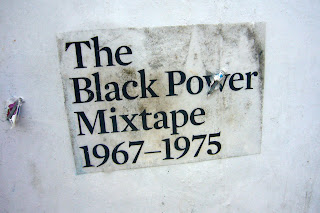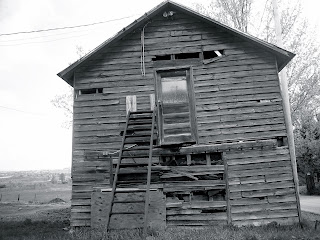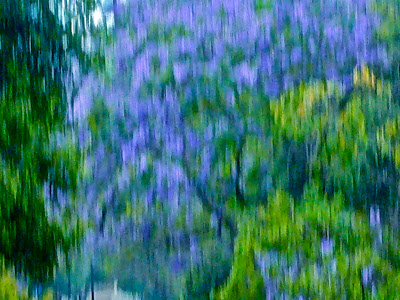Monday, June 27, 2011
A Tale About...
Once, there was a Crow...
and Crow would caw whenever it sensed danger...
CAW, CAW,
One day, it looked down from its perch, and saw a....
Coyote...
and Crow cawed and cawed.
Coyote's appearance meant that food was coming, and so, other animals were on their way too.
Skunks. CAW CAW
and raccoons and possums. CAW CAW CAW
But mainly,
Coyote. CAW CAW CAW CAW CAW
Crow looked down from its perch and saw, too, the old witch who fed the Coyote. She lived in a green house, with a green hedge and a green car, and whose complexion was a little green.
She didn't feed the little children she kept in the oven, but she fed the wild animals that came to her door. She loved the animals more than the little children, and more than her neighbor, who had asked her not to feed the wild animals.
At one time—about a week ago—the witch had told her neighbor that she wanted to have a good sense of community; the neighbor hadn't realized that what she meant was a community of wild things.
The witch whispered sweet nothings to the Coyote, as Coyote waited for its meal. She told the Coyote to be a good boy, Werden ein guter Junge; then cautiously she approached, while Coyote looked up at the bowl she held in both hands.
They understood each other; one was wild, and the other, lonely, or crazy, or both.
The neighbor stayed hidden behind the hedges, because she didn't want the Coyote to bark at her; also, she didn't want to be turned into jello by the witch. She knew that witches can do stuff like that— turn bones into halva, or turn coyotes into humans.
End of story? To be continued...CAW CAW
Tuesday, June 21, 2011
Weekend in San Fran
The first thing I did when I got home from San Francisco was pull out Rebecca Solnit's Infinite City: A San Francisco Atlas. When my friend Lu first handed me the book, I didn't know how to look at it: I'd never gotten San Fran as a city; it was too small and too big at the same time, too baffling in its hilly and divided neighborhoods. It also brought up memories of passing through in the seventies when the Mission District was a scary run down 'hood and Haight Ashbury had turned into a needle park. Some good memories too, like Green Gulch Zen Center—again, my guide Lu—and Tassajara Bakery on Cole Street, which, if you've never tasted Tibetan Barley Bread you might not get the reference, but sadly, it's too late; the bakery closed its doors in 1999.
This visit was different, though; I saw the city for the magic, infinite city that it is and opened Solnit's book immediately. It's a series of atlases around which she and a bevy of artists/writers/cartographers dissect the city, a city whose demographics and history have changed as much as any great city in the last 40 years. She writes about getting her sources from great books, but also from "living atlases," misfit characters who she interviews extensively: "I live among...these books. I also live among ghosts. For better or worse, the familiar vanishes, so that the longer you live here, the more you live with a map that no longer matches the actual terrain. After the great 1972 earthquake, Managua, Nicaragua, lost many of its landmarks; people long after gave directions by saying things like, 'Turn left where the tree used to be.'"
And that's what this book is like—getting the perspective of ghosts, hobos, migrant workers, thieves, queers, Zen masters, trees, fish....
My own understanding is slight, but on this trip, I came to translate the city (plus Oakland, not the wasteland I expected) in my own way. Bear with me, dear reader, and then read Solnit's book for true illumination.
Rat's Nest basic understanding:
Castro
and
The Castro
The Guggenheim
and
The Gap at Union Square
telegraph
and
and
Mills
Mills
As part of the Middlebury Language Program at Mills College,
signs in Arabic, French, Spanish and Japanese appear across campus.
No sheep.
Tuesday, June 14, 2011
In Shifts
(follow up to post on 6/3)
I don't know why I'm afraid to talk to my neighbor Thea about the commotion next door; perhaps because I talked to her last year about feeding the feral cats and skunks and raccoons and nothing came of it. My fear comes, too, from the fact that an old woman can be sharp edged as a knife, dangerous as a steel trap and unyielding to the point of chicanery.
7 a.m.: Breakfast, Coyote, table set for one
7:30-8 a.m.: breakfast, seven skunks
noon-3: brunch, six rowdy crows
5 p.m.: supper again for the coyote, although in this part of the country I think you call it dinner.
5:30 p.m.-until dark: skunks in shifts, the occasional possum and raccoon
The point of my argument (to make her stop setting out food) must be in the interest of the wildlife she's feeding. I'll say in a soft spoken manner, "Thea, you're not helping the animals; you're making them dependent on the food you give them. What will happen when you're not here?"
Who will get to the bowl first?
Why would I not be here? she'll ask.
Pause, What then? Am I to say, at your age your headed for the big ballpark in the sky; anything could happen. But I can't say that; it would be too cruel.
Well, what if you get sick, I'll say. What will the animals do? The coyote might become aggressive and attack some unsuspecting child or small pet; maybe jump over the fence and bite me for interfering with its supper.
She'll shake her head like last time and say she doesn't agree with my assessment.
I'll say, Okay, you win; let the skunks fill up the afternoon air with stink, let the coyote become a stalker, let the crows caw to their hearts content. I give up, I give up.
And she'll say, you see, what a lovely talk we've had. I'm glad we understand each other.
But it didn't go like that. When I called her at noon to talk about the problem, she was all good graces; she said she had wondered herself if she was doing the right thing. As a child during the war, she lived on the edge of a forest, and it was only natural to feed the animals during winter. I gently reminded her, an abundant harvest is always available in sunny CA; there's enough little voles and moles to fill up Dodger Stadium. She said so herself: "I have to remember this isn't Germany." So, she agreed to stop. If she couldn't feed one, she wouldn't feed any. She promised, no more food.
But I feel a little guilty that she won't have the animals to feed. She's lonely up here on Mt. Washington since her husband died five years ago; her daughter lives in Pennsylvania and comes out only a few times a year. It must give her pleasure to take care of so many small creatures. I wonder if I've done more harm than good.
Neighbor Thea with her daughter Karen, who lives back East.
Will I be like Thea in my old age, leathery and lonely? Will I do anything—no matter how misguided—to feel so needed?
P.S. Woke up this morning and noticed three bowls in her yard, and a possum lurking about. What the...??
Labels:
coyotes,
feeding wild animals,
Mt. Washington wildlife,
skunks
Friday, June 10, 2011
Black and White
and a little blue...
Mountain Tapir, Los Angeles Zoo
Eagle Rock Blvd. and El Paso
Window display, Walker St.
Flyer on Varick St.
Friday, June 3, 2011
HOWL
This is wildly off the subject but I didn't realize that today, June 3, was Allen Ginsberg's 85th birthday. I found out through Peter Hale's terrific blog, The Allen Ginsberg Project, subtitled, An Allen Ginsberg Gallimaufry, a word I had to look up—"a confused jumble or medley of things." But his blog doesn't seem confused; it has a point (and good photos) and that point is sharing facts and wisdom of the Beat Generation and of everything and one who was spawned from the gluttonous, gymnastic, gyzym of Ginsberg's genius.
So what got me there? I was searching for a picture of Carl Solomon and what his true role in HOWL, to whom the third section is dedicated, was. I noticed that his Wikipedia page was recently updated, so he still means something to someone, or perhaps to many. He was a crazy sonofabitch but as sane as Ginsberg when they found each other in the sanatorium. They remained friends until the end of Solomon's life.
Carl Solomon and Allen Ginsberg at the West End Bar, 1978,
(photo found on Peter Hale's blog)
Spanning the great divide of being in NYC with being back in LA is sometimes hard to do. For the first few days when I'm back, I feel numb, dumb, lacking in energy. But what peps me up is finding something that, no matter how distant, bridges the gap between both cities. Rereading Ginsberg's HOWL, the section for Carl Solomon, that speaks so holy and wholey of NYC, woke me up again.
My own HOWL woke me up yesterday, early morning. First the crows making a racket on our railing, then caw caw cawing overhead;
Then a swish and movement in Thea's backyard:
It caught me peeking around the corner to take its picture. For the next hour, it filled the canyon with its growls and barks, howls and HOWLS, pursuing me, through the canyon, to the back of my house (how did it know where I lived?) and approaching in its awkward, frightened, vulnerable, sad way.
Do I call animal control? Do I let Thea continue feeding it? What is the right thing to do?
You can hear it's yips and yaps, along with the crows, here:
Crows overhead
I snuck outside along the walkway between our houses, and saw my old neighbor Thea putting two plates of food down on the ground next to the canyon, and a second later, a coyote cautiously approaching...
I would say with almost certainty this is the same coyote I saw in the canyon at this time last year, when it was only a toddler. I worried then that Thea might be feeding it, but never imagined she'd be so blatant, deliberately putting out food for it to guzzle down. And guzzle down it did, indicating it's probably dependent on my neighbor—in her delusions of goodwill and ignorance—for the food it eats.
...but I freaked it out!
Freaked out!
It caught me peeking around the corner to take its picture. For the next hour, it filled the canyon with its growls and barks, howls and HOWLS, pursuing me, through the canyon, to the back of my house (how did it know where I lived?) and approaching in its awkward, frightened, vulnerable, sad way.
Do I call animal control? Do I let Thea continue feeding it? What is the right thing to do?
You can hear it's yips and yaps, along with the crows, here:
Subscribe to:
Comments (Atom)






































